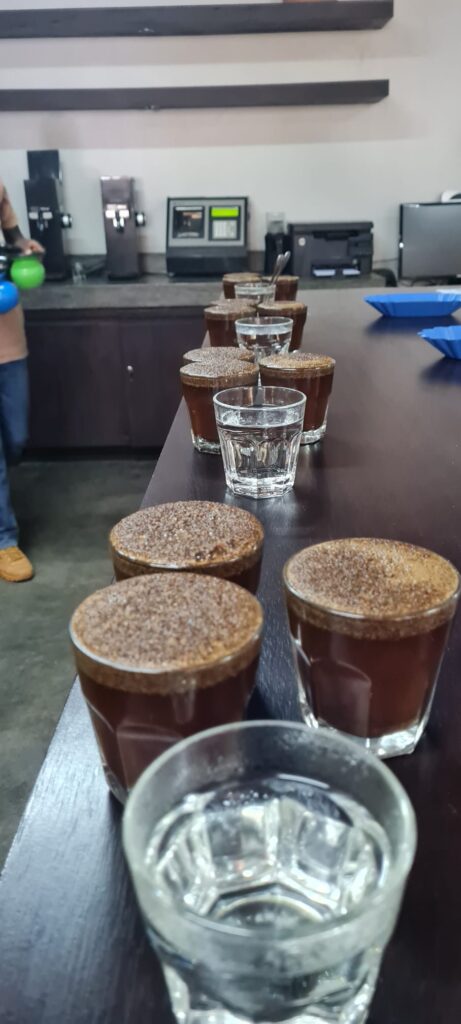The most important question you need to ask yourself when you’re tasting coffee is: What does this remind me of?
Evaluate Each Sip. Start with a tiny sip, followed by a more extended slurp into the mouth, aerating the coffee as it travels across the entire surface of the tongue. Take a tiny follow-up sip. Keep your eyes closed, focus on your tongue, and taste for the following:

Let’s walk through some of the things you want to look for when you’re trying to taste fruity coffee:
Acidity — High-altitude coffees particularly can have an acidity that reminds you of crisp fruit. Sometimes the prevailing acid is citric acid, reminding you of a lemon or orange. Sometimes the more noticeable acid is malic acid, which is tangy like a green apple or grape. Note that acidity isn’t the same as acidic, which is a measure of pH and not a question of taste.
Aroma — Some coffees, especially natural processed coffees, have really vibrant aromas that smell quite fruity. Your retro-nasal taste receptors interpret these aromas as flavors when you swallow. Common aromas in natural process coffees include blueberries, strawberries, and flowers.
Sweetness — Can you perceive specific kinds of sweet tastes? The actual sugars in a coffee can be noticeable and come across as a gentle sweetness. Sometimes this sweetness is like honey or caramel, but when it’s just like a hint of regular granulated sugar, it can pair with an aroma or acid to add to your brain’s interpretation of a fruity flavor.
Body/Texture — While the brew method often bears on the weight of a coffee in your mouth, different beans, and roast profiles feel differently in the mouth. Does the coffee feel rich and heavy, light or smooth?





